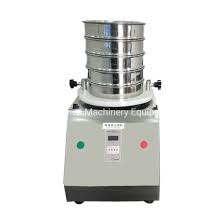Hoya Carnosa Tricolor is a beautiful climbing plant whose thick, waxy-looking leaves help it retain water. It is a type of plant, close to succulents that can grow up to more than 1 metre long, with green, yellow/beige leaves, combined with bright pink lines. Under the right conditions, Hoya Carnosa Tricolor can produce pinkish-white, ball-shaped flowers—perfect, right? Look how pretty they are…
Its flowers are a bit reminiscent of fondant decorations for cakes or tarts, right?
Many people are drawn to the hoya plant because of these flowers, which vary from species to species (and sometimes vary in colour within the same species). In some cases, hoyas are difficult to distinguish from one another unless they are in flower, but to the trained eye, slight variations in leaf morphology between species (and even within the same species) can be detected and detected. appreciated a lot.
As a houseplant, they are easy to maintain, long-lasting, grow vigorously, and bloom consistently year after year. Hoyas are commonly used as tabletop plants (resting on a table, shelf, mantel, etc.) or as hanging plants. And you can make your house colourful with these hanging plants which easily get from the plant store.
Essential care for your Hoya Carnosa
Light
Most hoyas (with exceptions) cannot withstand strong, direct light and their leaves will suffer damage from the sun. Since most species grow in the hollows of the forests, between the treetops and between them, they are more used to receiving diffused or dappled light, and that should be recreated in the home.
When visiting different garden centres and hoya growers, it is customary to grow it under 50-80% shade cloth to protect it from direct sun.
Substrate and Irrigation
Most of the hoyas don’t mind being a little tight, since they are used to growing epiphytically (RAE epiphyte: said of a plant that lives on another plant, without feeding at the expense of it), so it is not usually necessary to transplant a hole on the other hand, simply if it is convenient to renew the substrate every 2 or 3 years, more or less. Because they like to dry out more than most plants, I prefer to use terracotta pots as they are porous and can more easily remove water from the substrate.
This is particularly important because hoya carnosa does not like sitting in water. They do require regular watering but you should let them dry out intermittently as if they don’t dry out, they will rot quite easily. But, beware! if it does not receive enough water, its roots often dry up and die so remember regular watering, good drainage, and letting the substrate dry between each watering.
Humidity And Temperature
Most can’t handle cold temperatures and anything below 50F can cause cold damage, so be extra careful during the winter months.
Humidity-wise, Hoya carnosa is more accustomed to moderate to high humidity, particularly in subtropical and tropical zones. In addition, some go through the monsoon season, which means that they are used to heavy rains during part of the year. Despite this, they adapt easily and work well in homes that tend to have drier environments.
If you think yours seems stressed due to a lack of moisture, fill the saucer with rocks and water. Place the plant on top of the pebbles, making sure that the drainage holes and/or the bottom of the pot are not submerged in water. Misting several times a week should also help.
Is Hoya Carnosa Toxic?
Another point in favour of growing Hoya Carnosa as an indoor hanging plant is that it is non-toxic. It is considered safe even in homes with children and pets, as there is no need to worry about harmful side effects if the plant is accidentally ingested.




